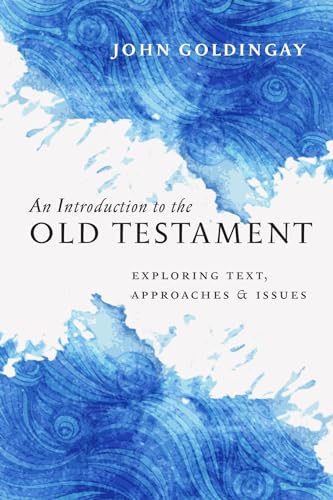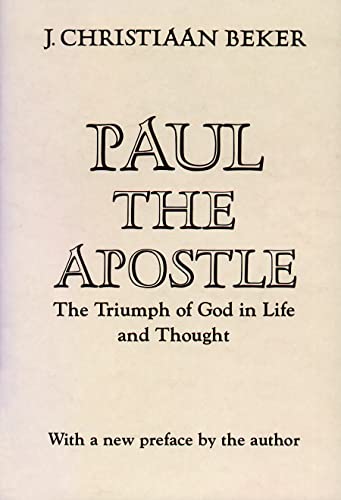Approaches to Old Testament Interpretation
Written by John Goldingay Reviewed By H.G.M. WilliamsonTheological students hardly need reminding that the Old Testament poses acute problems at most levels of study. Critical analysis seems generally harder to handle in this area for those of evangelical persuasion than it is in relation to the New Testament; the literature is extremely varied and was written over many centuries, so that one is often at a loss to know on what framework to construct a theological exposition; and the manner in which the New Testament uses the Old seems far removed from any with which we feel comfortable today. Finally, to make matters worse, the status of the Old Testament in Christian theology has been vigorously debated in recent years by many distinguished scholars (witness Goldingay’s 33-page bibliography!) whose works, especially when available only in translation from German, make heavy, not to say confusing, reading.
The editor of the series ‘Issues in Contemporary Theology’ is thus to be applauded for his decision to commission this volume and congratulated for securing John Goldingay as its author. The name guarantees a grasp of impressively wide and well digested reading, a resolute refusal to ‘fudge’ the issues in favour of any pre-conceived dogma and withal a concern ultimately to present us with positive guidelines for future thought.
Throughout the history of the church, Christians have striven for a simple but all-embracing description of the relationship between the Testaments. ‘Law and Gospel’ and ‘Promise and Fulfilment’ have long served in this way, while critical scholarship has provided us with approaches of its own, such as ‘salvation history’ or a traditio-historical analysis. Equally, there have been many attempts to find a single centre around which to construct a theology of the Old Testament itself. Dissatisfaction with the traditional ‘God—Man—Salvation’ structure as an imposition from outside the biblical material itself has led to such well known examples as Eichrodt’s use of ‘covenant’ as a key for organizing Old Testament theology.
Goldingay’s aim is not to add yet another to this venerable line. Rather, his central conviction is that ‘Each has seemed in some circle the way to understand the Old Testament. Each is certainly a way’ (p. 14). In consequence, he gathers these approaches into five groups, describes how each has been developed in scholarly circles, particularly since 1945, and adds his own criticism and appreciation in order to draw out what he regards as of value in each for today’s Christian.
By way of a brief summary, we may note that the first chapter, ‘The Old Testament as a faith’, deals with issues raised by what normally goes under the heading of ‘Old Testament theology’. Not surprisingly, Goldingay urges caution over adopting any one single approach to structuring an Old Testament theology. Rather, ‘a multiplicity of approaches will lead to a multiplicity of insights’ (p. 29). This allows Goldingay to face up resolutely to the difference between Old Testament and New Testament faiths while still maintaining that parallel status should be given to both in Christian theology.
The second chapter on ‘The Old Testament as a way of life’ brings us face to face both with the question whether it is satisfactory to subsume the whole Old Testament under the heading of ‘law’, and with the problems of applying the specific commands of the Old Testament in contemporary Christian ethics. Whereas often these have been treated as parts of a single issue, Goldingay seems to want to keep them apart to a certain extent with some suggestions for hermeneutics which I found amongst the most helpful in the whole book.
‘Salvation history,’ the subject of chapter 3, was a central element in the Biblical Theology movement. The rapid decline of the latter, however, has left its mark on this approach to the Old Testament, just as, indeed, questions about the claims made for salvation history contributed significantly to that decline in the first place. Once again Goldingay picks his way judiciously down a central path: the idea needs clarifying at a number of points, but need not therefore be rejected altogether. In the course of the discussion it is good to see a number of cardinal difficulties faced with resolute determination, not least the central issue raised by critical analysis: ‘did salvation history happen?’ It is of the nature of Goldingay’s response that he does not, except in the most general terms (‘faith is impossible if it has no historical grounds’, p. 73), supply an unequivocal answer to this dilemma. Since ‘we cannot have history’s benefits without its risks’, the way forward can only be by further critical, historical investigation, not by bolting down some convenient dogmatic hidey-hole.
Rather different in character are the final two chapters, where discussion centres on some of the more traditional approaches to the Old Testament from the standpoint of the New Testament such as typology, allegory, sensus plenior, the fulfilment of prophecy and the New Testament’s interpretation of the Old Testament. Involved here too, however, is some initial reaction to the recent stress, particularly by B. S. Childs, on the importance of an appreciation of canon for Old Testament interpretation.
So far, I have tried to indicate why such a book as this is required and to outline some of the major topics with which it deals. In concluding, it is necessary to enter two notes of caution, not by way of criticism, but so that potential readers may be fully aware of what is on offer.
First, despite the series editor’s preface, this is not a book to give ‘an over-view of the subject before starting detailed study’. In my opinion it demands quite an advanced knowledge of the subject and sometimes, as with the discussion of salvation history, can almost get bogged down in technicality. The number and nature of the references given in the footnotes too are far in excess of the requirements of an over-view, though extremely useful in themselves for more advanced students. The text itself usually highlights the really significant contributions to the debate, but even so there remains a danger that tyroes might be overwhelmed. Incidentally it would have been helpful for similar reasons if the very extensive Bibliography could have been classified in some manner.
Secondly, the nature of the series is such that readers will not find here even suggested answers to many of the problems relating to the interpretation of the Old Testament. To be sure, as should already be apparent, most of the old chestnuts get a couple of pages or more devoted to them, but mainly by way of a critical analysis of scholarly opinion. It was clearly not Goldingay’s brief to go further than this, although often his own positive suggestions also come through in brief compass. This, of course, will be of great value to theological students, but may be found somewhat frustrating by those who require a more direct pathway into the riches of Old Testament literature for theology and preaching.
In conclusion, then, this book represents a notable achievement in advanced map-making, and many of the worst dangers are clearly marked. Parts of the route across that map, however, still remain to be worked out by the individual traveller.
H.G.M. Williamson
Christ Church, Oxford






